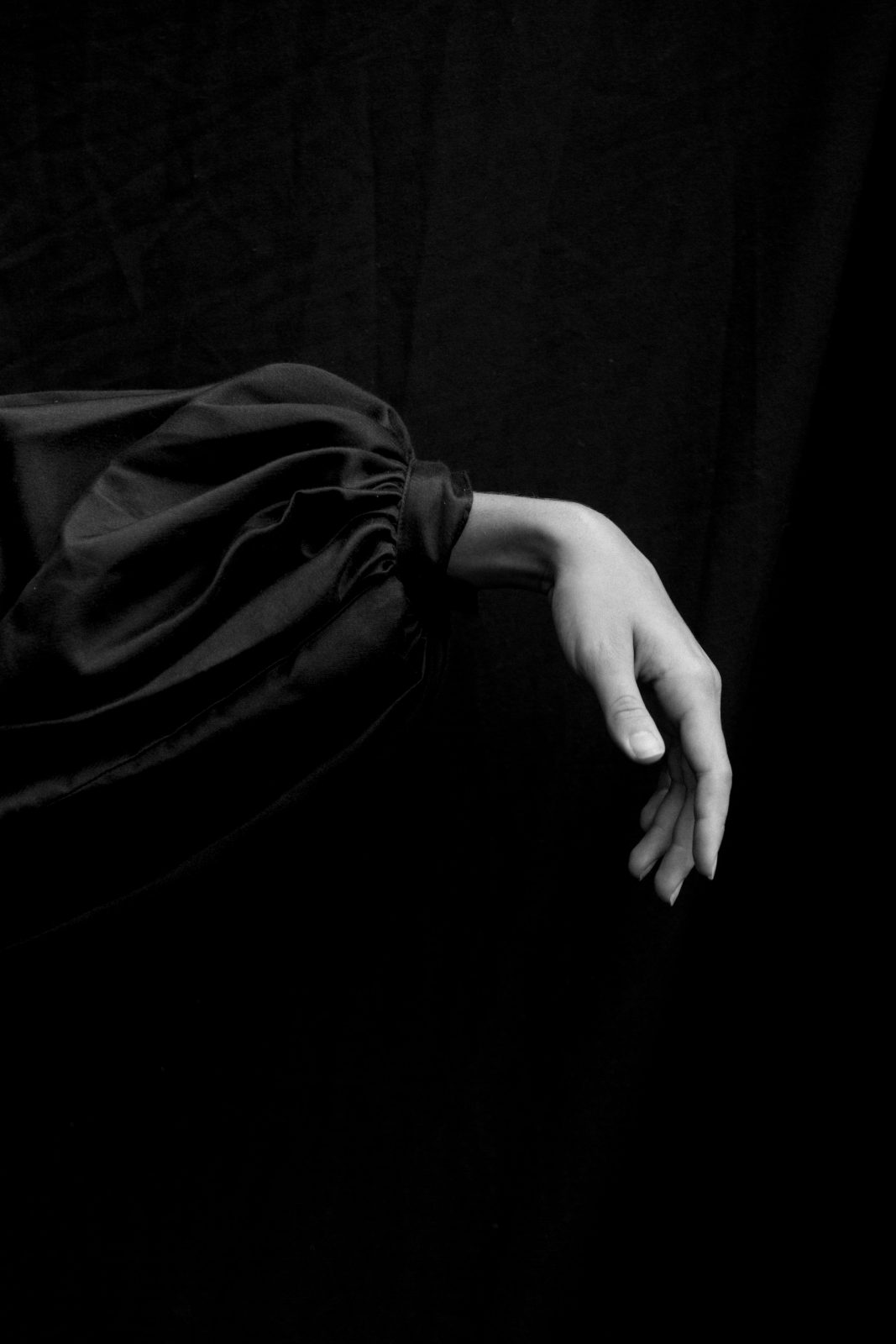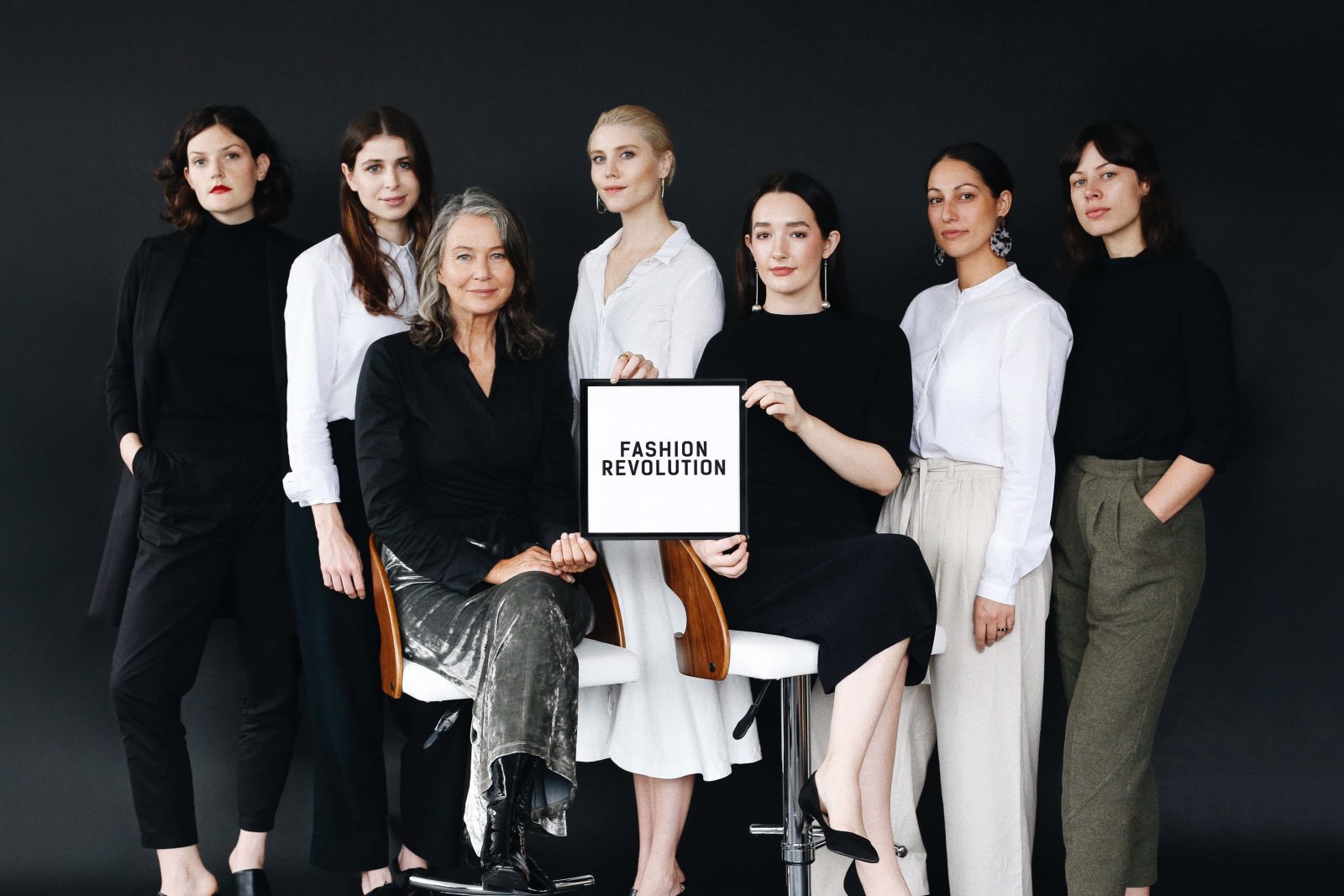
Feature
Revolution and
Disruption
By Harriette Richards, a PhD candidate in Fashion Theory and Cultural Studies at Western Sydney University.
The fashion industry is enamoured with the concept of revolution. Throughout the twentieth and into the twenty-first century, numerous designers have been described as ‘revolutionaries.’ Such designers have challenged prevailing aesthetics and production methods and successfully enacted change. As a system preoccupied with the pursuit of the new, fashion is constantly concerned with the future whilst simultaneously haunted by the past. The fashion industry is a difficult beast to revolutionise, given its immense size and scope, yet remarkable transformation continues to occur.
The challenge posed by the concept of revolution has not daunted Carry Somers and Orsola de Castro, who founded Fashion Revolution in 2013 following the tragedy at Rana Plaza in Bangladesh. The organisation aims to ‘radically change the way our clothes are sourced, produced and purchased.’ Since 2013, Fashion Revolution has become a global movement, challenging brands to accept a sense of ethical responsibility and imploring consumers to ask the simple question: ‘Who made my clothes?’
Fashion Revolution endeavours to establish wide-reaching reform. For many designers and brands, however, reform is frequently framed in terms of disruption rather than revolution. The distinction between these two terms is important. Revolution denotes the intention to overthrow the current system, to repudiate and replace. In contrast, disruption indicates something smaller and yet more pointed; the radical dissent of those dissatisfied with the current system. Disruption does not necessarily engender revolution, and yet it is an essential element of transformation.
The concept of disruption has become popular in the move towards more sustainable practices across design industries. This is no less common in fashion. Indeed, Valentina Zarew, former sustainability manager at H&M Australia and New Zealand, posits that the fashion industry is in ‘a major period of disruption.’
Harriette Richards
“The fashion industry is a difficult beast to revolutionise, given its immense size and scope, yet remarkable transformation continues to occur.”

Over the past five years, the detrimental environmental and social impacts of the seasonal fashion cycle have come under increasing scrutiny. In response, a number of courageous fashion practitioners are looking for ways to disrupt the conventional methods of the system.
Established production methods and consumption habits may be deeply entrenched, but that does not mean these methods and habits cannot be interrupted, questioned and, ultimately, reformed. The disruptive measures designers and brands are advancing include innovation at all stages of the supply chain. In large part, the question of disruption is about ethics; the ethics of producing fashion in a way that is both environmentally conscious and socially aware.
Designers are pursuing numerous initiatives that point to their disruption of the established modes of production. For example, brands such as Kowtow, Arnsdorf, A.BCH, Lois Hazel and Patagonia are sourcing organic and/or fair trade textiles; manufacturing bespoke, made-to-measure garments; developing new materials from waste plastic or natural fibres; engaging the labour of local craftspeople and producing on a small scale to minimise dead stock and further waste. These production decisions may appear small; however, together they form an act of disruption.
Choosing to use alternative methods and materials not only reflects the moves endorsed by Fashion Revolution, it also speaks of a commitment to the ideas of slow fashion, transparency and circularity. These terms are central to the disruption of the contemporary fashion industry. Slow fashion indicates a refusal to bow to the dictates of fast fashion; to instead run on a sustainable schedule and acknowledge the many people and skills involved in making clothes. Transparency determines the need for honesty regarding choices across the entirety of the supply chain, from the sourcing of raw materials to the costs involved in manufacture and distribution. Finally, circularity refers to the reuse and recycling of resources; closing the gaps in the supply chain in order to eliminate waste. These terms may be thrown around by some, but the real disruptors are able to demonstrate where these ideas are reflected in the way they operate.
Harriette Richards
“Without knowing the effects of the status quo, one cannot be expected to enact change. In order to revolutionise fashion, we must first know how fashion works.”
Much change is occurring in terms of innovative design and production. However, the concept of a more balanced fashion system is not only a matter of changing production methods. Disruption also extends to consumer behaviour.
Consumers are crucial to the success of disruption. Without behavioural change at the point of sale, this innovative work is no longer sustainable. The process of disruption requires the engagement of both producer and consumer, a relationship of symbiosis.
Disruption is not passive. It is an act of consciousness; an engagement with process and a rebellion against the status quo. It also requires a positive focus on education. As journalist Clare Press notes, ‘finger wagging is counterproductive. You inspire with positive messaging.’
Disruption is rebellious, but it is also respectful. Disruption requires determination, yet also delicacy. Without knowing the effects of the status quo, one cannot be expected to enact change. In order to revolutionise fashion, we must first know how fashion works.
The question posed by Fashion Revolution – ‘who made my clothes?’ – gives consumers a tangible technique through which to engage with the ethics of fashion. By asking this seemingly simple question, consumers are performing a crucial act of disruption. Every time a question like this is asked, the ripples of change grow larger. The hands of those who make and buy fashion also have the capacity to transform fashion, and topple the industry’s status quo. In this time of disruption, these are the hands we need.
Photography: Claudia Smith and Katy Thomas
Sub Editor Reb Mery

